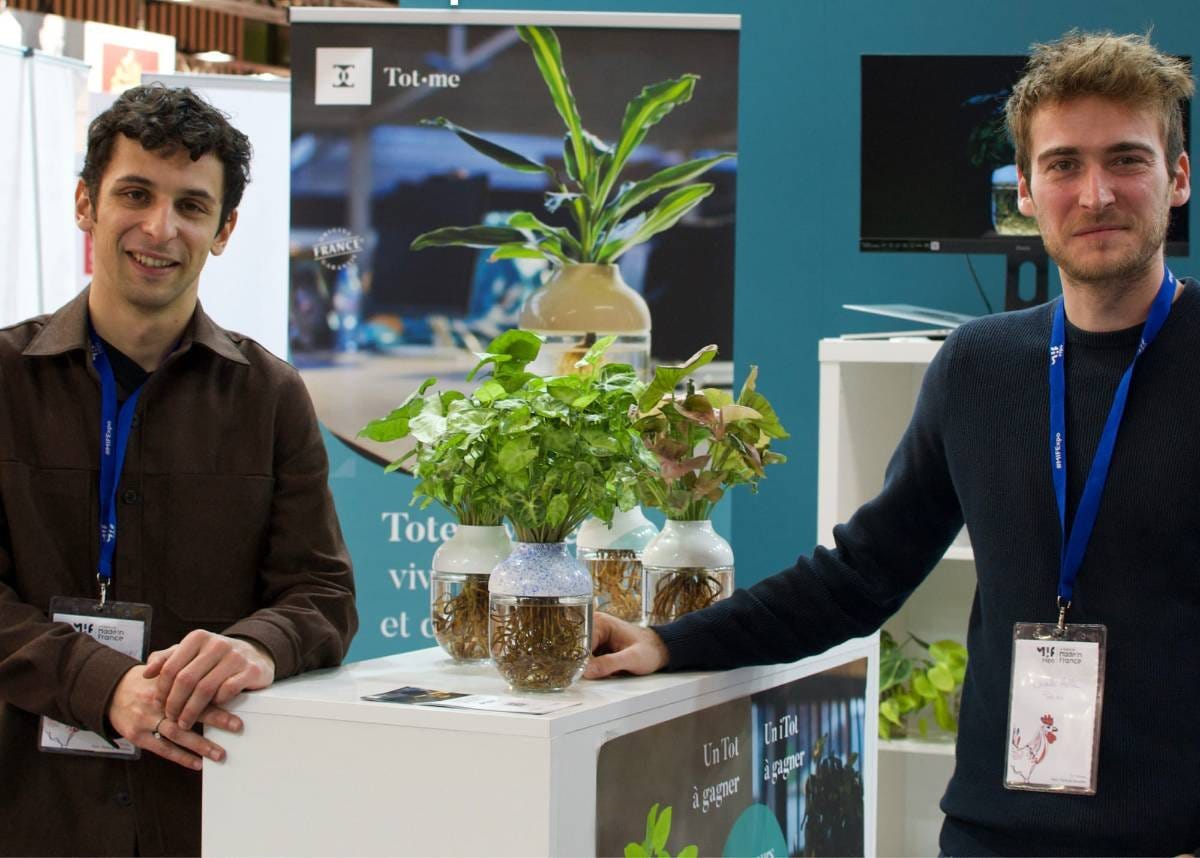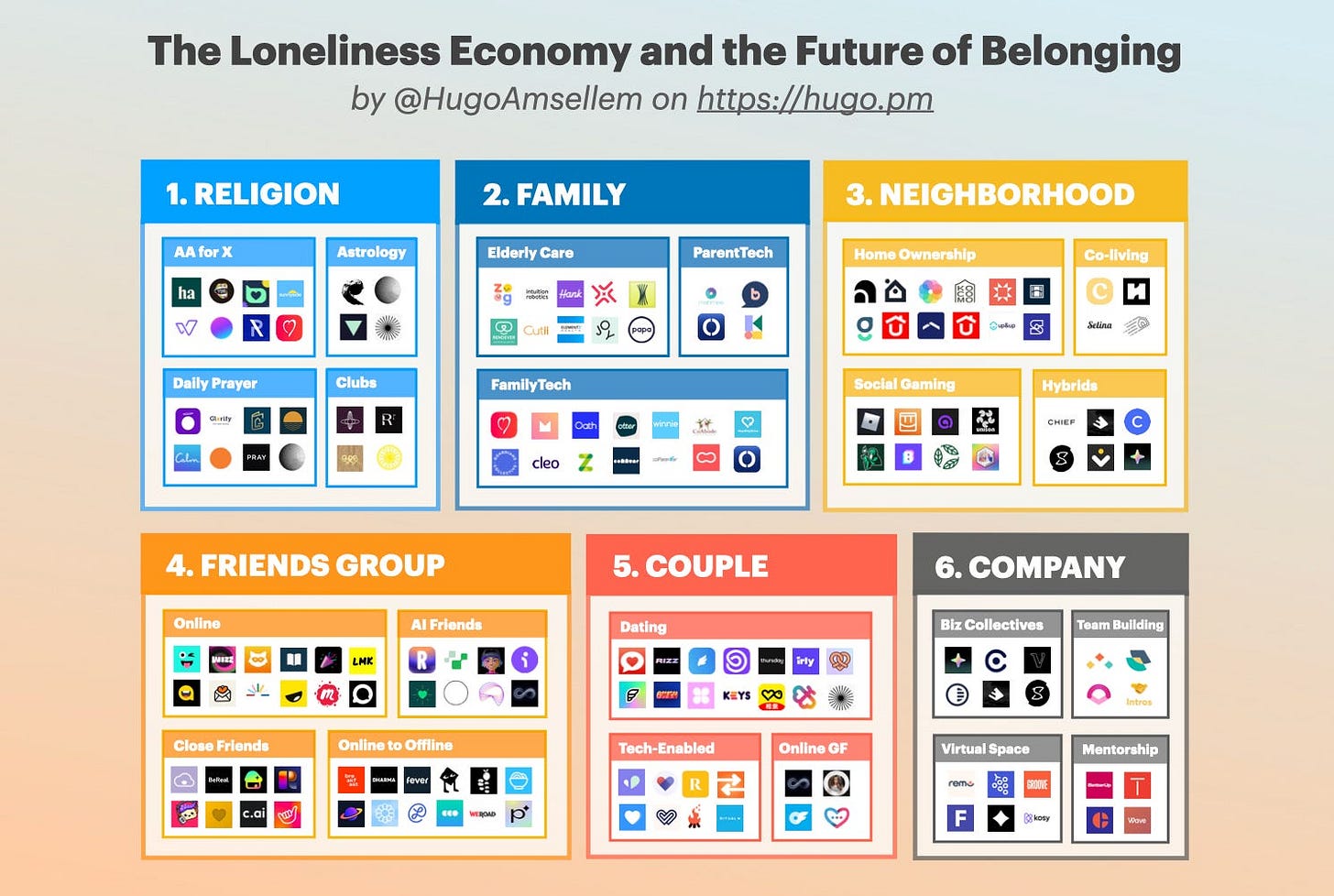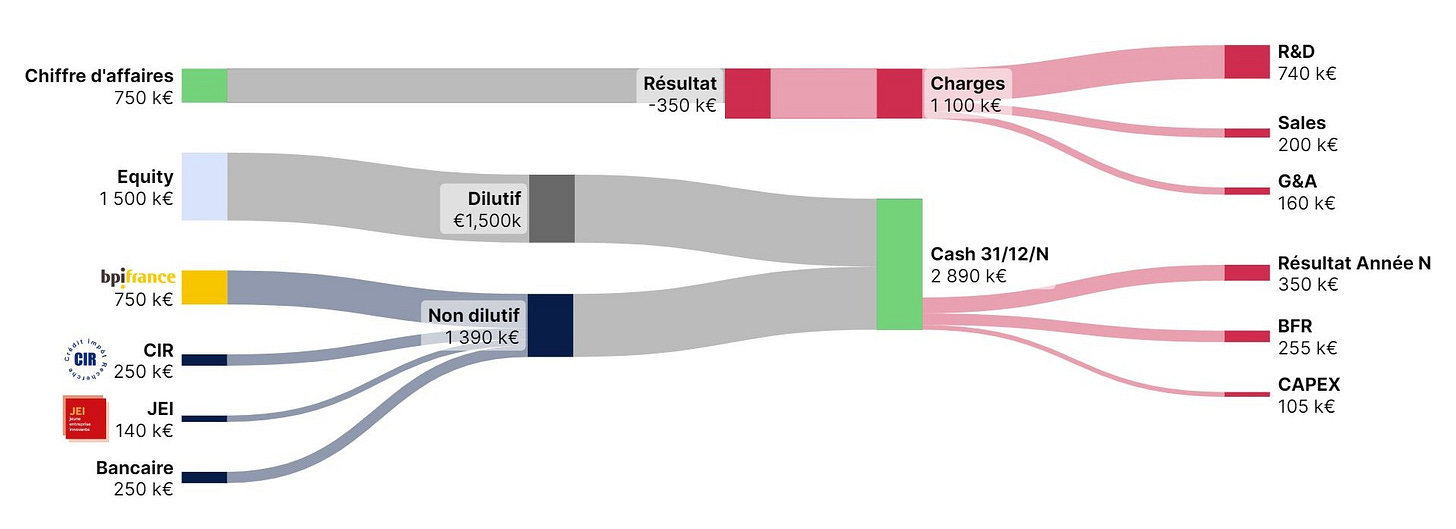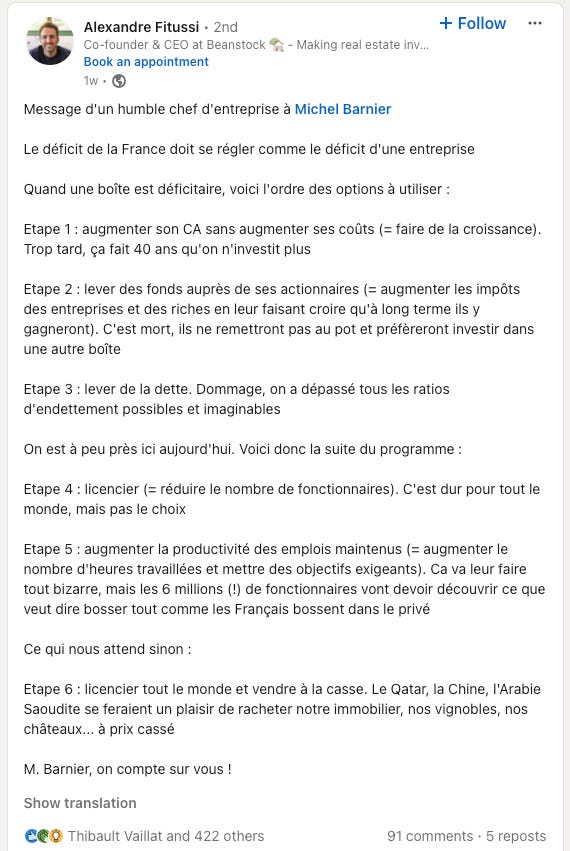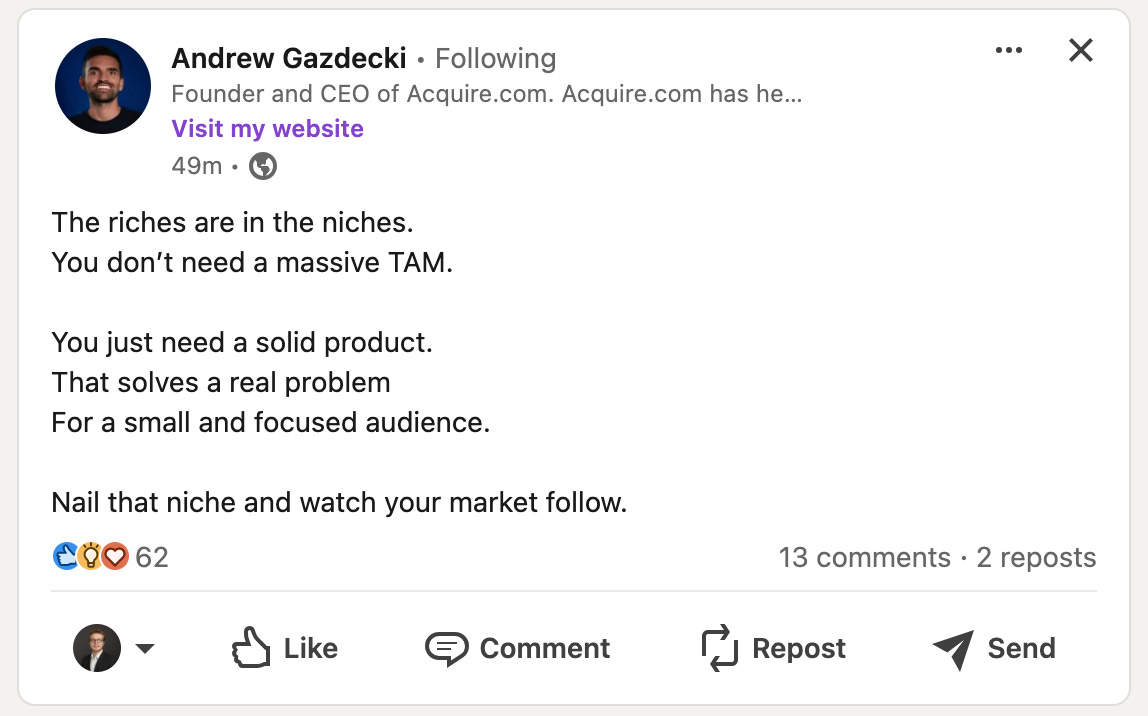🌱 How Lucas created an E-commerce brand selling hydroponic plants 🌿
Thanks to a campaign he launched on Kiss Kiss Bank Bank, he reached 30k € in pre-orders. That money helped him generate 100k € in revenue during the first year.
Hey everyone, it’s Rémi 👋
I’m the founder of makeur-journey.com, a platform designed to help entrepreneurs launch their journeys. I’m so happy to launch the second edition of this newsletter !
🕒 If you have : 1 minute
INTERVIEW OF THE WEEK 🎙️ : Discover how Lucas created a Digitally Native Vertical Brand (DNVB) around hydroponic plants. He turned the challenge of delivering plants that contain water into an opportunity by creating an entry barrier for his business; he patented a gel…
LEARNINGS OF THE WEEK 📚 : According to Hugo Amsellem, General Partner at Intuition: “Loneliness is now one of the most important problems our generation has to solve, alongside climate change and obesity.” So, I decided to explore the topic further to better understand the Loneliness Economy. Here is a deep dive.
INTERESTING BUSINESS IDEAS💡 : In this section, I share 3 interesting online businesses I've come across. Two businesses were founded by the same solopreneur : Yifan Goh. Based in Singapore, he built several micro startups and even sold one, OurBabyAI.com, for a five-figure sum. He is now working on new ventures and shares his entire journey on Twitter as he builds them. The last business of this section is about creating a biography with AI. Check out the links below.
INTERESTING CONTENT ON THE WEB 🌐 : How do financial flows circulate within an innovative tech startup ? Sharpstone, a consulting firm specializing in innovation financing, published a diagram to represent it. Alexandre Fitussi wrote a message to the French Prime Minister to help him resorb French debt. He compares a nation's management of debt to how a company operates when it is facing losses.
Did you get the email forwarded to you ? Sign up so you don’t miss the upcoming newsletters.
🕒 Reading time : 8 minutes
Interview of the Week 🎙️
In Limoges, France, a new business began during the first Covid-19 lockdown. Meet Lucas de Rouvray, an entrepreneur who waited until he had 30 000 € in pre-orders before launching his e-commerce brand, TOT’.
The crowdfunding success
Lucas launched a crowdfunding campaign on Kiss Kiss Bank Bank to test whether people would be interested in his idea. He wanted to see if there was a market for his eco-friendly indoor plants. With 30 000 € in pre-orders, the campaign was a big success, showing that many people were excited about his products.
A focus on sustainability 🌱
What makes Tot unique sucess ? Lucas wanted to create sustainable hydroponic plants that not only look great, but also make people feel good. Each plant comes in stylish, eco-friendly containers made in France from recycled materials and savoir-faire (made with Limoges porcelain). Plus, the production involves people with disabilities, adding a nice touch of social responsibility.
Development strategy
He used a Digitally Native Vertical Brand (DNVB) model, which means he sells directly to customers. This way, he can control every part from the production to the delivery process. Lucas chose Shopify for his website and used Coda, a NoCode tool, to manage inventory automatically. This made running the business much easier.
Learning from Experience
One important lesson Lucas learned was to test his idea early. With Tot, he made sure to get pre-orders first, which reduced his risks.
What’s next ?
He wants to create his own fertilizer to improve plant care. In the competitive e-commerce market, it’s important to be innovative. Lucas’s story shows that with a little investment and a good crowdfunding campaign, you can test your product and find success. Tot is not just selling plants; it’s creating a community focused on sustainability and well-being.
👉 Find the full interview here.
Learnings of the Week 📚
The Loneliness Economy is booming, so I tried to understand the market behind it (you can find a full deep dive here).
It’s quite paradoxical, but we live in a world more interconnected than ever, where social media and emerging technologies allow people to communicate instantly, breaking down barriers of time and distance.
Despite the unprecedented levels of connectivity, loneliness has become a widespread and growing issue. A recent study from Harvard revealed that 61% of young adults (aged 18-25) experience serious feelings of loneliness.
This phenomenon has existed for a long time but has accelerated following the COVID-19 pandemic. According to cultural historian Fay Bound Alberti's 2019 book, A Biography of Loneliness: The History of an Emotion, chronic forms of loneliness didn't exist before the 19th century. Capitalism and secularism are the parents of contemporary loneliness.
The consequences of loneliness are impactful, leading to physical and mental health threats. Loneliness has been estimated to shorten a person’s lifespan by 15 years, an effect comparable to being obese or smoking 15 cigarettes per day. Additionally, loneliness has significant economic repercussions, often resulting in disengaged employees, reduced productivity, and lower performance, which impose real costs on businesses. For instance, stress-related absenteeism alone is estimated to cost $154 billion annually.
As a result, a unique and innovative sector has emerged to address this epidemic of loneliness — the Loneliness Economy. This "loneliness economy" refers to the growing number of businesses capitalizing on the need for human connection.
Tech and entrepreneurship can solve big problems, such as :
There are also some sinister examples of contemporary capitalism, including :
Renting love (Rent-a-girlfriend, high traction in Japan)
Renting company (Rent-a-Friend apps allowing individuals to “rent” platonic company for roughly $40 per hour)
Hugging apps (cuddlist.com market professional “cuddling therapy” for prices beginning at $60 for an hour-long session)
Chatbot (Xiaoice launched an empathetic chatbot that has 660 million users).
Human-like robot relationships (Lexi Love, an AI girlfriend)
Social robot pets (Emergence of cybernetic dogs like Lovot)
One notable trend is the rising popularity of "get ready with me" (GRWM) videos on TikTok. These videos create a sense of intimacy, allowing viewers to feel like they are becoming "close friends" with their favorite celebrities and influencers. Additionally, there has been an increase in pet ownership, as more people seek companionship and emotional support.
Looking ahead, the future of social interaction seems to be leaning towards Virtual Reality (VR). Platforms like VRChat are revolutionizing how individuals connect by providing immersive virtual environments and customizable avatars that facilitate l relationships. This shift aligns with the strategies of major tech companies like Apple and Meta, which are heavily investing in social VR to usher in the next wave of interaction. While these virtual worlds hold great potential for transforming socializing, the timeline for widespread adoption remains uncertain.
👉 To go further in the subject, find a full deep dive here.
3 Interesting Business Ideas 💡
https://ourbabyai.com/ is an AI baby generator that can create images of your future baby. Yifan Goh transformed this idea into a venture earning $1,000 a month within just four months and later sold it for a five-figure sum. He shared his journey in this thread.
https://www.10000square.com/ is a digital real estate platform where you can rent virtual squares to showcase your online presence. The grid consists of 10,000 squares, each available for rent at $17 per year. By renting a square, you can add a link to your website, offering a fun and creative way to promote your brand. The goal of Yifan Goh, the founder, is to achieve $170,000 in annual recurring revenue (ARR) from a dumb idea.
https://life-story.ai/ allows you to effortlessly create a biography book for someone. You simply need to answer the questions posed by the artificial intelligence. Then, customize the cover and add pictures. The software will generate a 250-page book.
Interesting content on the web 🌐
Sharpstone published a Sankey diagram (a type of flow diagram where the width of the arrows is proportional to the represented flow) to represent the circulation of cash within a young startup. It shows that the startup is generating an operating loss, but this is offset by non-operating cash flow from both dilutive and non-dilutive fundraising. This highlights the importance of building a solid financial roadmap to survive the early years.
Alexandre Fitussi simplifies what an entrepreneur can do when a company is operating at a loss : 1) increase revenue without raising costs, 2) raise money from stakeholders, 3) take on debt, 4) lay off staff, 5) boost productivity, 6) lay off everyone and sell whatever assets remain.
That’s all for this edition ! We’ll catch up next week 👋
👉 Stay tuned for more inspiring stories from the world of entrepreneurship ! 🌟



